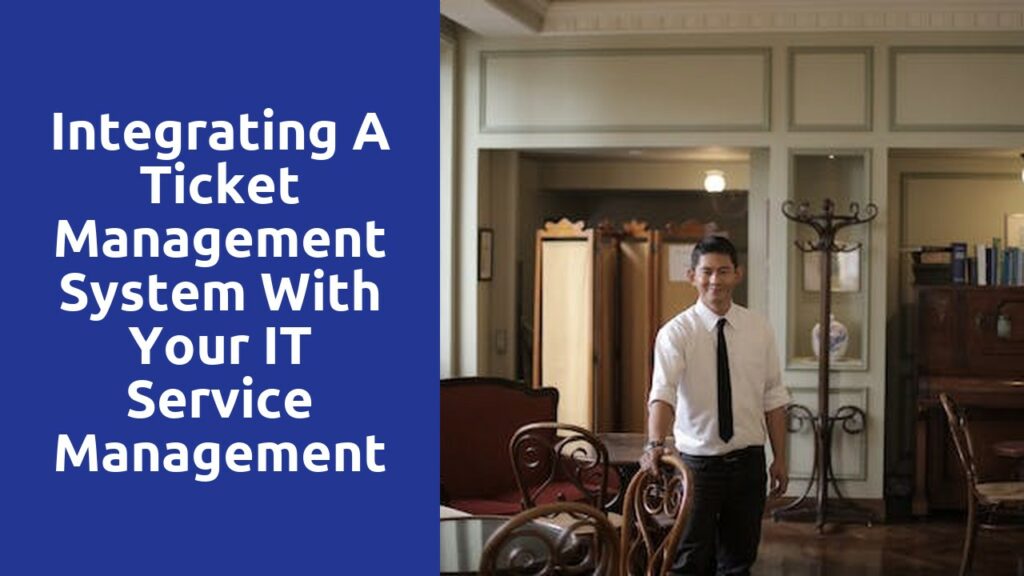The Benefits of Streamlining IT Service Management Processes with a Ticket Management System
Efficiency and effectiveness are key factors in the success of any organization, especially when it comes to IT service management. In today’s fast-paced and technologically advanced world, businesses rely heavily on their IT systems to operate smoothly. However, managing and resolving IT issues in a timely manner can be a daunting task, especially without a proper system in place. This is where a ticket management system proves its worth.
By implementing a ticket management system, organizations can streamline their IT service management processes and improve overall efficiency. One of the significant benefits is the centralization of all IT-related requests and issues. With a ticket management system, all incoming requests, incidents, and problems are recorded and organized in a single location. This allows IT teams to have a comprehensive view of the overall workload and prioritize tasks accordingly. As a result, businesses can respond to IT issues promptly and avoid potential downtimes that can significantly impact productivity.
Understanding the Role of a Ticket Management System in IT Service Management
In IT service management, a ticket management system plays a crucial role in streamlining the process of handling customer requests and issues. By implementing an effective ticket management system, organizations can efficiently track, prioritize, and resolve customer queries in a timely manner. This not only enhances customer satisfaction but also improves the overall efficiency of the IT support team.
One of the main advantages of a ticket management system is its ability to centralize all customer requests in one place. With the help of a well-designed system, IT technicians can easily create, update, and track the status of tickets throughout their lifecycle. This eliminates the need for manual tracking methods, such as spreadsheets or paper-based logs, reducing the chances of errors or missed requests. By having a centralized repository of tickets, the IT team can easily access relevant information, including previous communication history and resolutions, when addressing customer queries.
Identifying Key Challenges in Integrating a Ticket Management System with IT Service Management Processes
Integrating a ticket management system with IT service management processes is no easy task. It poses several key challenges that organizations must tackle in order to ensure a seamless and efficient workflow.
Firstly, one major challenge lies in the compatibility of the ticket management system with existing IT service management processes. Different organizations may have diverse processes and workflows in place, making it crucial to find a ticket management system that can be easily integrated and adapted to meet these specific requirements. This compatibility issue may require extensive customization and development, potentially resulting in additional costs and time-consuming implementations.
Moreover, another challenge arises from the need to maintain data accuracy and consistency across different systems. When integrating a ticket management system with IT service management processes, it is important to ensure that data is synchronized between the two systems in real-time. Any discrepancies or delays in data synchronization could lead to miscommunication and inaccuracies, ultimately impacting the quality of service provided to end-users. Implementing effective data management strategies and establishing robust data governance policies are essential to overcome this challenge.
Best Practices for Selecting the Right Ticket Management System for Your Organization’s IT Service Management Needs
Implementing an effective ticket management system is crucial for organizations to efficiently handle their IT service management needs. With numerous options available in the market, selecting the right system can be a daunting task. However, by following a set of best practices, organizations can ensure that they choose a ticket management system that aligns with their specific requirements and enhances their overall IT service delivery.
Firstly, it is essential to thoroughly assess the organization’s existing IT service management processes and identify the key pain points. This evaluation will provide valuable insights into the specific features and functionalities the ticket management system should possess to address these pain points effectively. Additionally, involving all relevant stakeholders, including IT staff and end-users, in the evaluation process can help gather a comprehensive understanding of the system requirements and ensure buy-in from key contributors.
Step-by-Step Guide to Integrating a Ticket Management System with Your Existing IT Service Management Processes
Step 1: Assess Your Current IT Service Management Processes
Before integrating a ticket management system into your existing IT service management processes, it is crucial to thoroughly assess your current processes. This will help you identify any gaps or inefficiencies that need to be addressed. Start by reviewing your existing workflows, ticket handling procedures, and escalation processes. Look for areas where bottlenecks occur or where tickets are being mishandled or overlooked. Additionally, consider gathering feedback from your IT staff and users to gain insights into their pain points or suggestions for improvement. This initial assessment will serve as a foundation for designing an effective integration strategy.
Step 2: Define Your Integration Goals and Objectives
Once you have a clear understanding of your current IT service management processes, it is important to define your integration goals and objectives. What do you hope to achieve by integrating a ticket management system? Are you looking to streamline ticket handling, improve response times, enhance communication with users, or increase overall efficiency? Setting specific and measurable goals will help guide your integration efforts and keep them focused. Additionally, it is essential to consider the potential challenges and risks associated with the integration process. By defining your goals and objectives upfront, you can proactively address these challenges and minimize any negative impacts on your IT service management processes.
Leveraging Automation and Self-Service Options to Enhance IT Service Management Efficiency with a Ticket Management System
Organizations are continually seeking ways to optimize their IT service management processes and enhance efficiency. One approach gaining popularity is leveraging automation and self-service options through a ticket management system. By embracing these technologies, businesses can streamline their IT support operations, reduce response times, and enhance overall customer satisfaction.
Automation plays a pivotal role in enhancing IT service management efficiency. By automating routine and repetitive tasks, such as password resets or system updates, IT teams can dedicate more time to resolving complex technical issues. This not only speeds up the resolution process but also allows support personnel to focus on higher-value activities that require human expertise. Additionally, automation eliminates the potential for human error, leading to more accurate and consistent service delivery. Implementing automation within a ticket management system can transform a company’s IT service management practices, ultimately leading to cost savings and improved productivity.
Related Links
Integrating a Ticket Management System with Your IT Service Management Processes
Common Challenges in Ticket Management and How to Overcome Them

